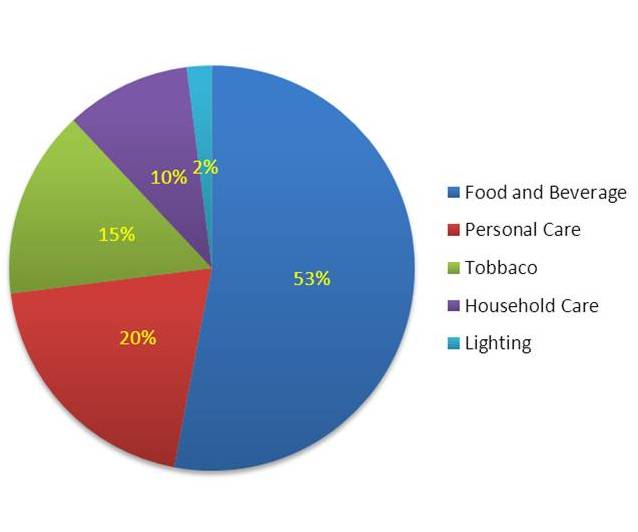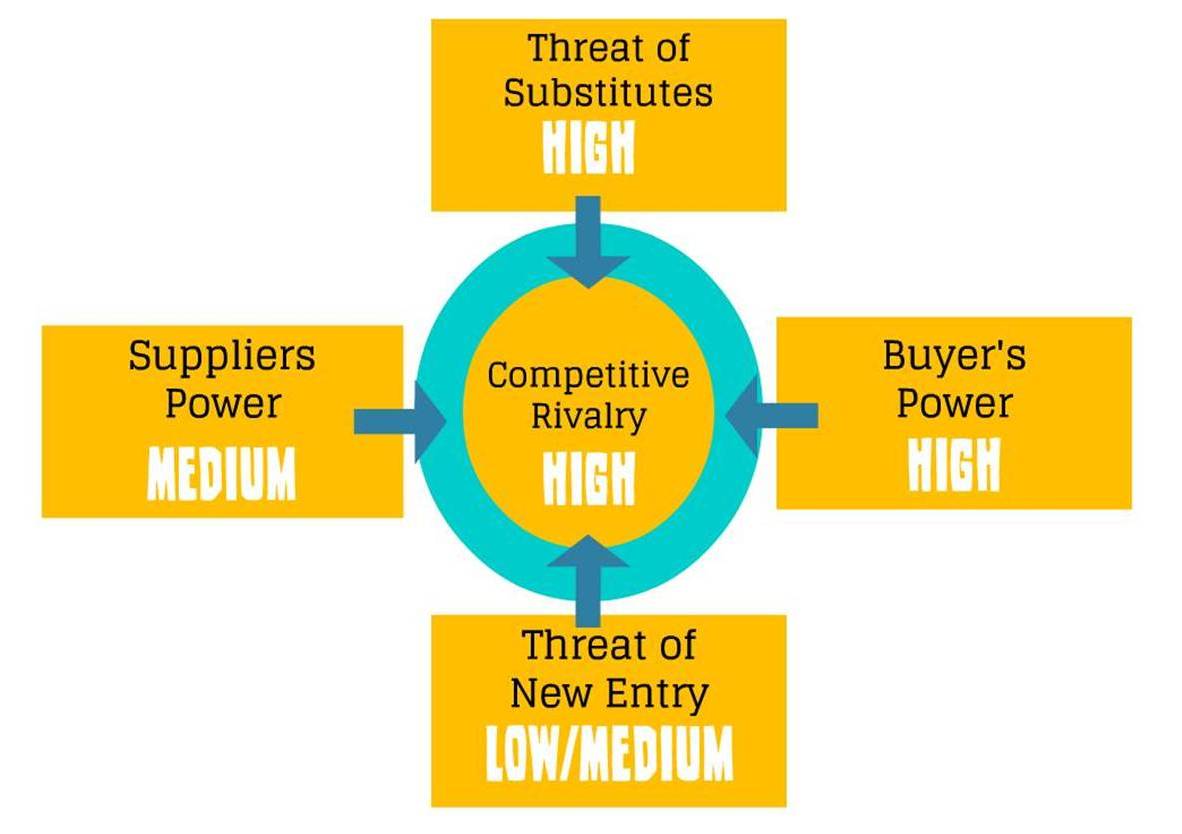Industry Analysis In A Business Plan –
Some decisions require a lot of thinking. You cannot just adopt “Rocks, Scissors, and Paper” to decide in such cases. Many reviews, analyses, and debates are behind such vital decisions. The same is the situation of Luke and his wife, Daisy. They have made this big decision to buy a new home. They have analyzed various areas and bungalows and buildings, and flats. Finally, they have shortlisted a small house and are about to do the paperwork. Luke has analyzed all the positives of that area and nearby amenities. Daisy, on the other hand, is having a hard time. Since it is the most significant decision for her after her marriage, she has been going nuts. She is having nightmares of all the possible things that can go wrong with the house and the new place.
But nothing went wrong in their case, and they lived happily in the new home. As an intelligent person, Luke had done some proper analysis and predictions. He made calculations of the possibilities and prospects of that area and came up with a positive outlook. Impressive right? But do you want to know a little secret?
Luke has some fantastic analytical skills. So the question is, from where did he get such skills? Is it hereditary? Or has he developed it over time?
How do you think Luke was able to buy such a magnificent new home? The answer is that Luke is a big fan of Warren Buffet. He has been investing in the stock market for a long time and doing well. Before investing in any company, Luke analyzed that sector and industry well. He came up with his industry analysis report and decided whether to invest in that sector or the company. So let’s use Luke’s analytical skills and get insights into what industry analysis is in a business plan and how to perform the same. So let’s learn the basics of Industry analysis.
What is Industry Analysis In A Business Plan?
Before starting with the actual meaning of the industry analysis in a business plan, first, let’s understand what an Industry is.
The industry is a collection of Competitors producing a similar product or offering similar services to their customers.
So the next question is, why are we studying that industry?
To ensure it is the best or worst industry to enter or invest in.
Industry analysis in a business plan is a tool that enables a company to understand its position relative to other companies that produce similar products or services like it. While considering the strategic planning process, a company must understand the overall industry’s forces. Thus, industry analysis techniques in a business plan enable businesses to identify threats and opportunities. It helps them focus their resources on developing unique capabilities to gain a competitive advantage.
Understanding the industry and forecasting its trends and directions, they need to react and control their portion in the industry.
Major elements
1. Understanding the underlying forces at work
- Competition intensifying
- Changing customers’ needs and taste
- Technological innovation
- Globalization
- Entry of major competitors
- Sudden regulation or deregulation
2. Understanding the attractiveness of the industry
- Whether it is feasible to enter or invest in that industry.
3. Understanding the critical industry analysis factors that determine success within the industry.
Importance 
- It is an important element of any investment that one wants to make.
- To succeed, business owners need to analyze that industry.
- Important for positioning the company in the niche market
- It aids the companies in identifying potential opportunities.
- It helps in analyzing the threats.
- Assists in analyzing the fit between internal management preferences and the business environment.
- Facilitates mitigating the risk of entering an extremely competitive business.
Ways to perform
- One way to perform the industry analysis in a business plan is to do the ratio analysis and comparisons. Ratios are ascertained by dividing one business variable by another. By comparing the company ratio with that of the industry, a business owner can understand where his business stands concerning the industry average.
Michael E. Porter developed another model for analyzing the industry in his classic book Competitive Strategy: Techniques for Analyzing Industries and Competitors (1980). His model shows that rivalry among the firms in an industry depends upon the following five forces:
The Threat of New Entry
The threat of new entrants refers to the entry of new competitors in the industry. Naturally, a profitable industry will attract more competitors looking to achieve profits. If the entry barriers in the industry are low, it may pose a significant threat to the firms already competing in that market.
Bargaining power of the Supplier
Supplier power refers to the pressure suppliers can exert on businesses by raising prices, lowering quality, or reducing product availability to intimidate buyers. All of these things directly cost the buyer.
Bargaining power of the Buyer
It refers to the pressure the buyers can exert on businesses to ensure higher quality products, better customer service, and lower prices. Strong buyers can make the industry more competitive, thus decreasing the profit for the seller.
Competitive Rivalry
It is the extent to which the competitive firms within an industry can bully each other, thus decreasing profits. Fierce competition may lead to stealing profits and market share amongst competitors.
Threat of Substitution
It is the availability of a substitute product that the buyers can find instead of a core selling product.
Industry Analysis 3 Steps
# Gathering the Data
- The Scope of the Research
Define the industry where you would like to perform industry analysis research activities. It can be a broad industry or a niche industry.
- Research your industry
Information sources that will help you conduct your industry analysis in a business plan are different for every business. For example, you might need local information, which you can get from your local chamber of commerce. Or you can find your industry analysis information on government websites. You can also find out government statistics or other commercial statistics. You may have to conduct some internet searches to track down the information.
If the information is difficult to obtain at one particular site, you’ll have to extrapolate information from different sources to get the information you’re seeking. Start finding the data from the government or other websites where accurate data is available. Check academic databases for any published information on your area of interest.
- Compile relevant data using the sources above.
Make notes of annual revenues, the number of companies involved, and workforce statistics of the desired industry. Find statistics about the size of the customer base and buying trends.
Master financial analysis techniques. Analyze industry data effectively to forecast financials. Perform market research to assess market trends.
# Analysis
- Description of the Industry
Start your industry analysis report with a general description of the industry. Include one or two paragraphs about the industry’s size, products, and geographic concentration.
- Describe the company
Include information about the company that you may want to research. Fill in all the general and relevant information about the company.
- Competitor Analysis
Understand the competitors and mention relevant statistical information about their revenues, profit, etc. Describe their product range if possible. Mention their strategies and forth-coming products.
# Outlook
GDP and Inflation effects
Mention how much the sector has been contributing to the GDP and how it has been affected by the rising inflation. Give an outlook on the same.
Try to understand the answers to the following industry analysis questions.
What are the industry’s foremost economic characteristics?
To answer this question, you can acquire data about the industry from governmental census data or sites such as Yahoo.com or other data-intensive web locations.
What kinds of competitive forces are industry members facing?
Understand the interrelationships among companies in the industry and their suppliers and buyers. Also, understand the ease of entry and exit from the industry.
What is the Change driving factors and their impacts?
Understand the industry analysis characteristics of the industry, unlike changing social trends, demographics, regulatory issues, etc.
What do market positions rivals occupy?
Analyze whether a firm is smartly positioned or not. Many industry analysis websites list the company’s key competitors and information about them.
Finally, you should get a positive response to the following question.
Points to Stress in Industry Analysis in a Business Plan
1. Industry attractiveness and industry success factors
- Industry attractiveness is the presence or absence of threats exhibited by industry forces. Thus a more significant threat posed by any of the industry forces lessens the attractiveness of the industry.
- Success factors are the elements that play a significant role in determining whether a company will succeed or fail in a given industry. Some industry analysis examples of success factors are- quick response to market changes, product line, reasonable and fair prices, product quality, sales support, a good record for deliveries, financial position and a management team.
2. Analyzing the future
- One of the crucial factors in industry analysis in a business plan is analyzing the sector’s future. Here one can see how the industry has performed historically. Explore how the sector will perform by looking at historical trends.
- However, the sector’s future is also affected by the significant changes or regulations related to that industry. Hence it is necessary to analyze these factors for the same.
3. Demand and Supply Analysis
Demand and Supply Analysis also plays a major role here. The following factors of demand and supply may affect the industry-
- If demand increases and supply remains unchanged, it leads to a shortage of goods, and the prices increase.
- If demand decreases and supply remains intact, it leads to surplus goods and a decrease in the price.
4. Effect of Inflation on the Industry
- Inflation has affected some major economies of the world over the past years. Hence analyzing the effect of inflation on a particular sector becomes extremely important in the industry analysis of a business plan process.
- Savings, as well as investments, are affected by the high rate of inflation. Hence most companies are affected adversely due to lesser demand for their products and services.
5. Other important factors that can be considered for Industry Analysis in a business plan are
- Size of the industry
- What sectors does it include?
- Major players in this industry
- Markets and customers
- Estimated sales for the industry (This year? Last year? The year before?)
- National/economic trends affecting the industry?
- National/economic trends that might affect it in the future
- Long-term outlook
- Competitor analysis
- The competitive advantage of the business
- Target Market analysis
- Market growth rate
- Market profitability
- Industry cost structure
- Distribution channels
- Success factors
- Success Details
Considerations for Industry Analysis in a business plan
- While carrying out an industry analysis in a business plan, one should consider which forces pose the greatest threat to the business.
- Companies may then undertake careful strategic planning to mitigate these threats.
- Managers should also consider their own preferences and internal capabilities before undertaking a strategy developed from an industry analysis.
Business Cycle Analysis
Try to classify the industries according to their growth cycle.
-
Growth industries
The earnings in such industries are significantly above the average of all sectors. Growth stocks suffer less during a recession.
-
Defensive industries
Such industries are least affected by recessions and economic adversity.
-
Cyclical industries
Such industries are most affected by recessions and economic adversity.
Benefits of Industry Analysis in a Business Plan
- The benefits of completing an industry analysis in a business plan help company managers to gain a better understanding of their business in the industry.
- Allows companies to position themselves carefully in their industry.
- It helps companies to respond better to any changes in the industry.
Example of Industry Analysis In A Business Plan (FMCG Sector)
So having known the importance and ways to carry out an industry analysis in a business plan, let us now analyze the Indian FMCG sector.
Industry Overview
- Currently, the FMCG sector is the fourth largest sector in India, with a market size of USD 12000 Billion.
- It is to grow to a USD 18000 Billion industry by 2031.
Major Segments in the FMCG Sector
Major Players
SWOT Analysis of the FMCG Sector
- Strengths
1. Low operational costs
2. Established distribution networks in both urban and rural areas
3. Presence of well-known brands in the FMCG sector
- Weaknesses
1. Lower scope of investing in technology and achieving economies of scale, especially in small sectors
2. Low exports levels
3. Copy products narrow the scope of FMCG products in the rural and semi-urban markets.
- Opportunities
1. Rural market is mostly untapped
2. The increased purchasing power of consumers
3. Large domestic market- population of over one billion.
4. Export potential
- Threats
1. Removal of import restrictions resulting in replacing of domestic brands
2. Tax and regulatory structure.
Porters five forces model for FMCG Sector
Key Challenges
- Consolidation
- Product innovation
- Lifestyle products
- Backward integration
- Third-party manufacturing
- Increased hiring from Tier 1 & 2 cities
- Reducing carbon footprint
Opportunities
- The government approved an investment of up to 100 % foreign equity for NRI & overseas corporate bodies.
- India has allowed 51 % FDI in multi-brand retail
- Relaxation of license rules
The above industry analysis of the Indian FMCG sector is brief to give a gist of what industry analysis in a business plan should include. The actual industry analysis report may be exhaustive detailing all the essential factors.
Hope that the above article has added some value to your learning. Share this with your friends who might find this article interesting.
Related Articles:-
Here are some articles that will help you get more details about Industry Analysis in a business plan.
- Database Management System
- Big Data Analytics Techniques
- Stock vs Options
- Growth Stock vs Value Stock
Industry Analysis In a Business Plan Infographics
Learn the juice of this article in a minute through Industry Analysis Infographics











